Tag: trial
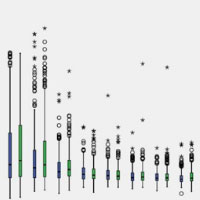
Partial Pressure of Oxygen and Neurological Outcome in Out-of-Hospital Cardiac Arrest Patients
Following out-of-hospital cardiac arrest (OHCA), patients regularly suffer from post cardiac arrest syndrome including symptoms of anoxic brain injury and reperfusion-related damage. Hyperoxemia or hypoxemia exposure occurred... read more

Testing Epinephrine for Out-of-Hospital Cardiac Arrest
Despite having a powerful effect on restoring spontaneous circulation after out-of-hospital cardiac arrest, epinephrine produced only a small absolute increase in survival with no increase in favorable functional recovery... read more
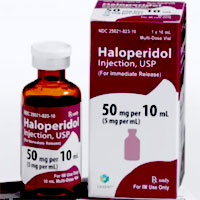
Haloperidol for the Management of Delirium in Adult ICU Patients
Among critically ill patients, haloperidol administration compared with placebo does not significantly affect short-term mortality, incidence of delirium, ICU length of stay, or delirium or coma-free days. Additionally, there... read more

High-frequency Oscillatory Ventilation: Still a Role?
In light of emerging data from clinical trials, the place of high-frequency oscillatory ventilation (HFOV) in the management of acute respiratory distress syndrome (ARDS) is uncertain. Although not first-line, HFOV remains... read more
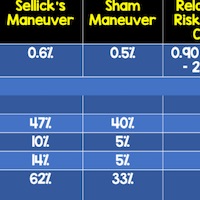
Cricoid Pressure in Airway Management: The IRIS Trial
This large randomized clinical trial performed in patients undergoing anesthesia with RSI failed to demonstrate the non-inferiority of the sham procedure in preventing pulmonary aspiration. Further studies are required in... read more

Immediate interruption of sedation compared with usual sedation care in critically ill postoperative patients
This trial provides evidence that a strategy of avoiding continuous sedation as early as possible, in the absence of residual neuromuscular blockade and hypothermia, compared with usual sedation care, resulted in improvements... read more

Interventions to Improve the Physical Function of ICU Survivors
ICU admissions are ever increasing across the United States. Following critical illness, physical functioning (PF) may be impaired for up to 5 years. We performed a systematic review of randomized controlled trials evaluating... read more
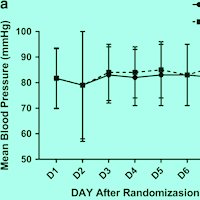
Terlipressin vs. Norepinephrine As Infusion in Patients With Septic Shock
In this multicentre, randomised, double‑blinded trial, we observed no difference in mortality between terlipressin and NE infusion in patients with septic shock. Patients in the terlipressin group had a higher number of... read more
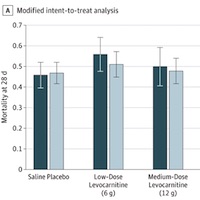
Effect of Levocarnitine vs Placebo as an Adjunctive Treatment for Septic Shock
In this dose-finding, phase 2 adaptive randomized trial, patients with septic shock and moderate organ dysfunction were treated early in the course of illness with low (6 g), medium (12 g), or high (18 g) doses of levocarnitine... read more

Prospective Assessment of the Feasibility of a Trial of Low Tidal Volume Ventilation for Patients with Acute Respiratory Failure
Use of initial tidal volumes less than 8 ml/kg PBW is common at hospitals participating in the NHLBI PETAL Network. After considering the size and budgetary requirement for a cluster-randomized trial of LTVV vs. usual care... read more
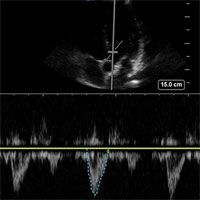
Fluid Responsiveness in a Hemodynamically Unstable Patient
Only half of patients who are hemodynamically unstable will respond to a fluid bolus. There are no historical or physical examination findings that can help us decide whether a patient is a fluid responder, but we must treat... read more
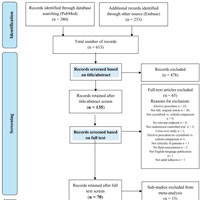
Crystalloids vs. Colloids for Fluid Resuscitation in the ICU
This systematic review and meta-analysis, which included only high-level evidence from randomized, controlled trials (RCTs) conducted in intensive care settings, revealed that crystalloids were less effective than colloids... read more
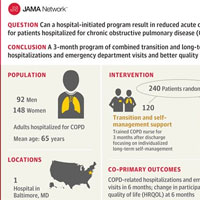
Effect of a Program Combining Transitional Care and Long-term Self-management Support on Outcomes of Hospitalized Patients With COPD
In a single-site randomized clinical trial of patients hospitalized due to Chronic obstructive pulmonary disease (COPD), a 3-month program that combined transition and long-term self-management support resulted in significantly... read more

Long-term outcomes in patients with septic shock transfused at a lower versus a higher haemoglobin threshold
Long-term mortality rates and HRQoL did not differ in patients with septic shock and anaemia who were transfused at a haemoglobin threshold of 7 g/dl versus a threshold of 9 g/dl. We may reject a more than 3 % increased hazard... read more




